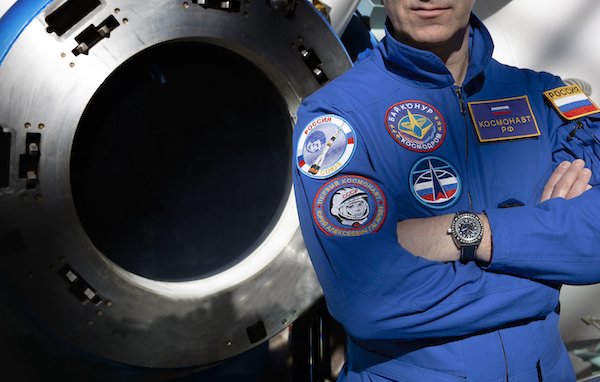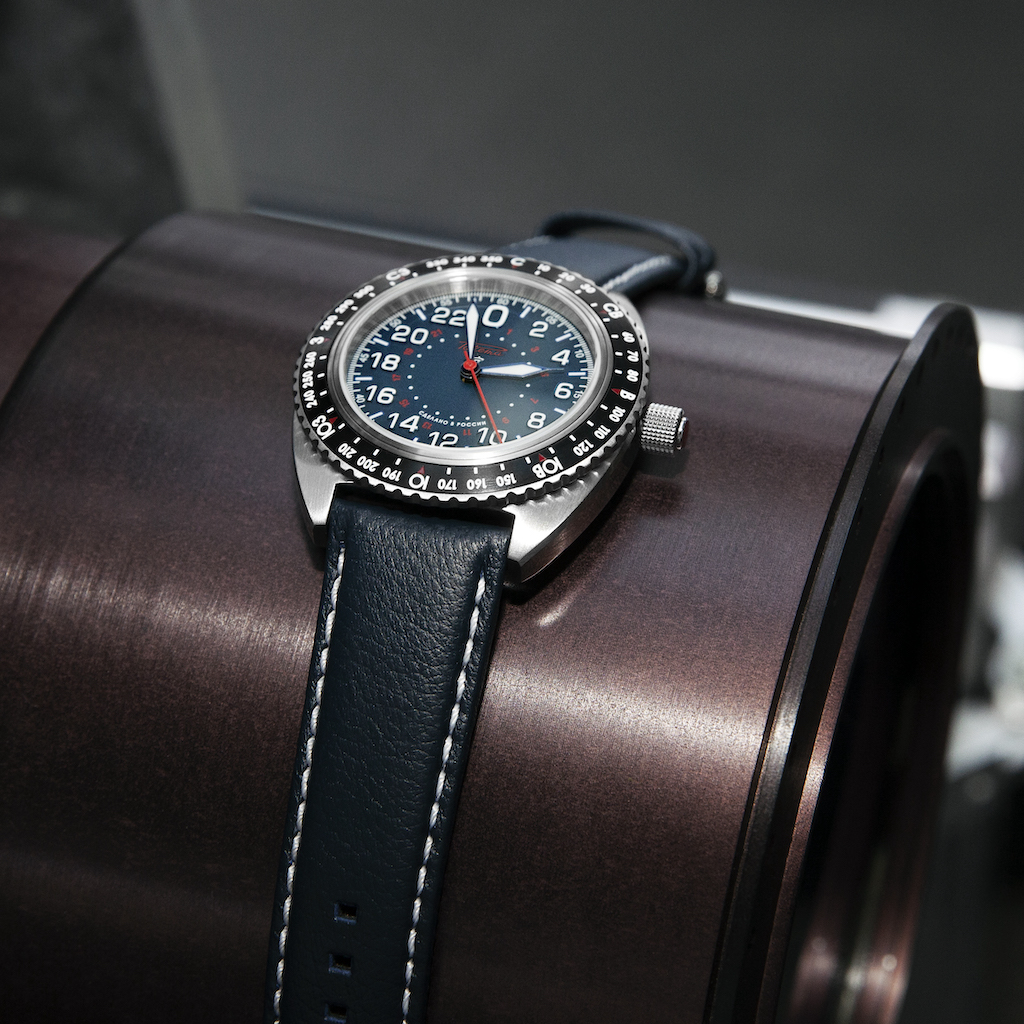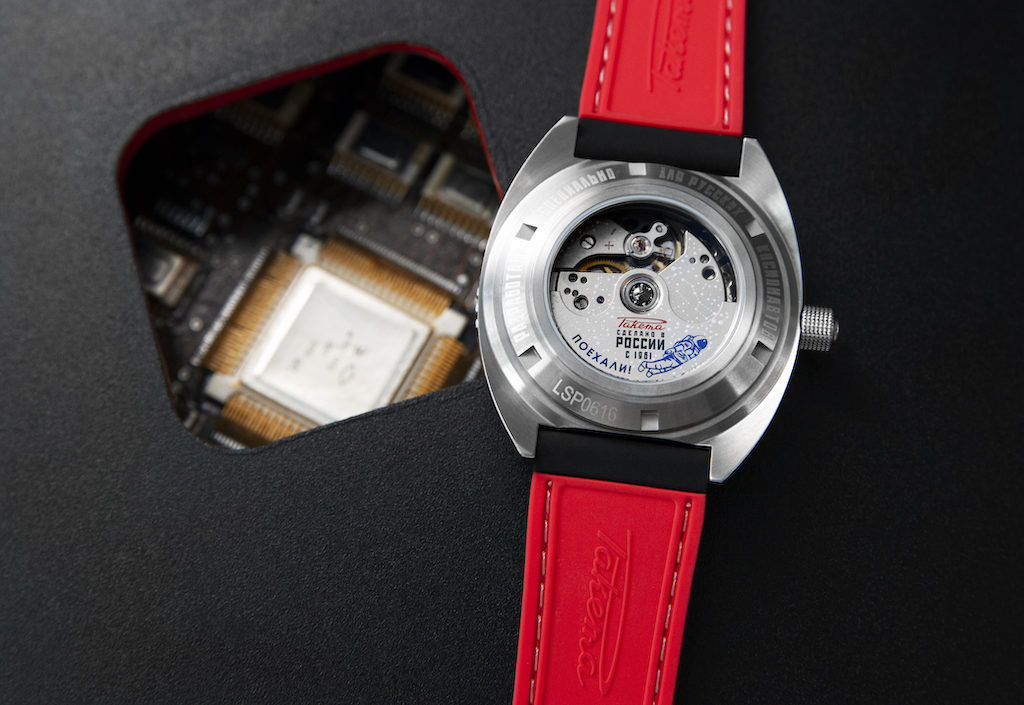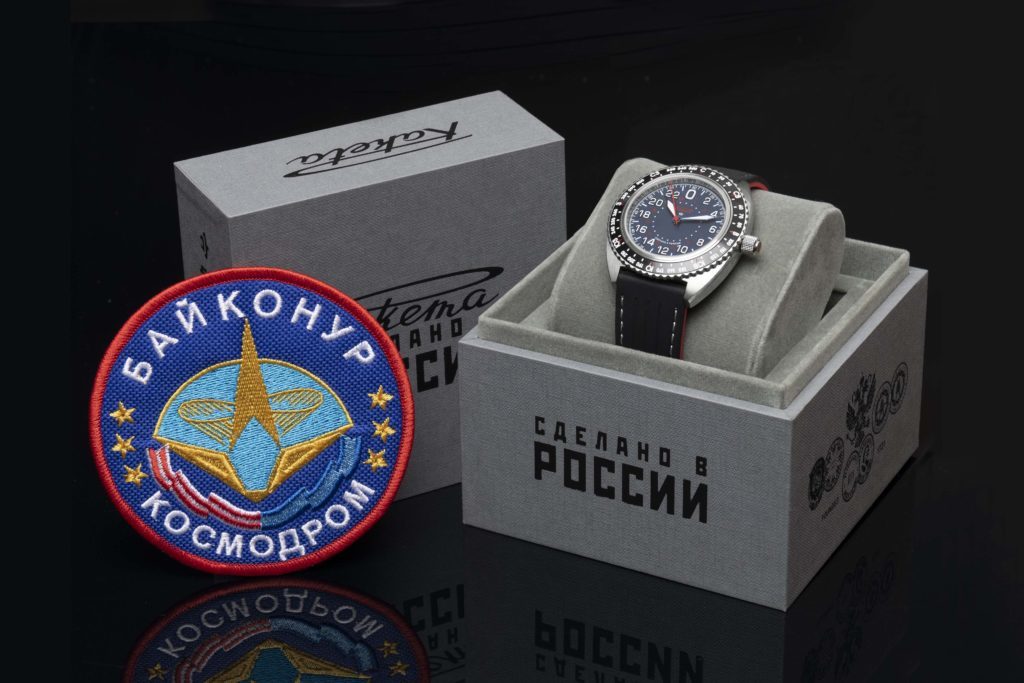60 years of space conquest on your wrist!

60 years ago, on 12 April 1961, the first ever manned spaceflight by the Russian cosmonaut Yuri Gagarin was such a groundbreaking event for humanity, that the Soviet Union felt the need to dedicate a brand in its honour: it created the watch brand “Raketa” which means “space rocket” in Russian. Since then, the Raketa Watch Factory accompanied every step of the space conquest by engineering watches for Soviet cosmonauts. Today, 60 years later, Raketa continues this tradition with Russian cosmonauts.
The Raketa “Baikonur” model is a specialized watch for cosmonauts developed in 2016 with the cosmonaut Sergei Krikalev.

Sergei Krikalev is certainly one of the cosmonauts who contributed the most to the space conquest. He holds one of the records for the number of stays in space (6 stays) and for the total aggregate time spent in space (803 days – nearly 2,5 years). Sergei Krikalev actually broke so many records in space that he is nicknamed in Russia the “Record Man”! He is also the cosmonaut who was stranded for 6 months in space after the Soviet Union collapsed in 1991, until Russia figured out how to bring him back to Earth in 1992! He thus knows better than anyone else what kind of watch is needed by cosmonauts.
Cosmonauts don’t really need sophisticated complications such as chronographs. They essentially need a watch:
- that is simple & robust, on which they can rely to survive in the extreme conditions of space,
- with one simple complication – a 24 hour mouvement to allow them to distinguish night from day in the International Space Station (ISS) where they have 16 sunrises and sunsets every 24 hours (because the ISS circles the Earth every 90 minutes)
Raketa delivered by producing the Raketa “Baikonur” watch: a sturdy 24 hour automatic watch!

The Raketa movement in the ”Baikonur” watch has another important feature that makes it even more robust. “Buckle up” to understand it: when you wear the watch in the space station, its automatic winding system will obviously not work properly in the absence of gravity, and you will therefore need to regularly wind it up manually. In most other automatic watches, this would lead to a quick wearing out of the tiny little wheels in the automatic winding module (because they would be turning to no purpose every time you would wind-up the movement manually). The Raketa automatic movement includes a very special system that disengages these little wheels when you wind-up the movement manually, thus avoiding their premature use while the watch is in space. As a result, the automatic winding system will work perfectly well when you land back on Earth after a long stay in space!

In addition to enabling you to distinguish night from day, the 24 hour dial provides another really cool function: it can serve on Earth as a solar compass. This is why the rotating bezel of the Baikonur watch has markers indicating the 4 cardinal points (in Russian) and the 360 degrees as in a normal compass (please refer to the Raketa website to understand how to use this watch as a solar compass). This solar compass would be very useful if your “Soyuz” descent module should fail to land at the right spot in the deep taiga forest and you would need a compass to find your way back to civilization (which actually already happened in the soviet days)!
The Raketa movement has a beautifully printed decoration that you can see through the open caseback: a cosmonaut flies in open space in the middle of celestial constellations and the famous words pronounced by Gagirin (when he flew to space) is printed in Russian on the oscillating weight – meaning en English “Let’s go!”.
Cosmonauts have a tradition of wearing different insignias on their suits: for the 60th anniversary of the first space manned flight and of the Raketa brand, each Baikonur watch is delivered with a Russian space insignia.




 Russian
Russian English
English French
French